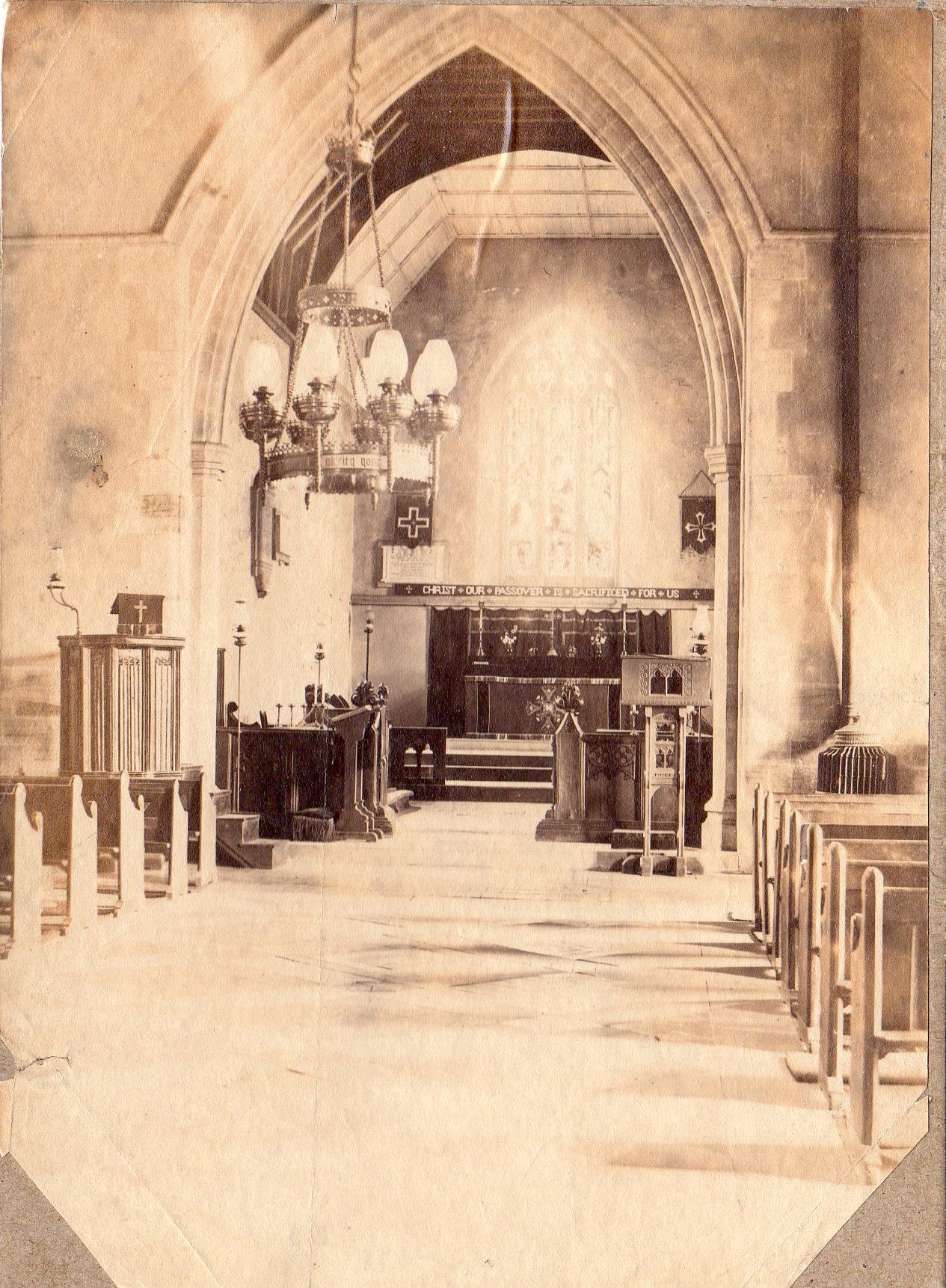| St
James the
Apostle
Parish Church of Wigmore Herefordshire |
Parish Church of Wigmore - St James the Apostle is a Grade 1 Listed building that dates from
the 11th Century. The church is sited close to the ruins of Wigmore Castle and is located
within Mortimore Country. The church is built to Norman architectural design but has one
surviving wall with a Saxon period herringbone layout.
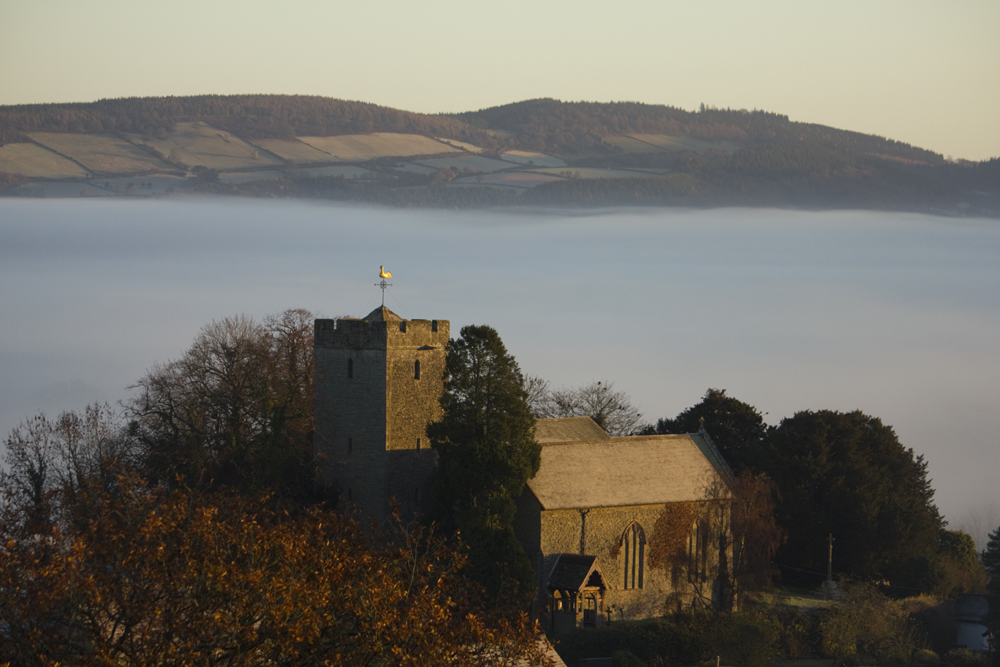
Photo by michaelfieldsend.com
The Heritage Group was intrigued to discover in St James Church a remarkable and most unusual heating
system that was used for warming the church, installed when it had a Victorian restoration in 1864.
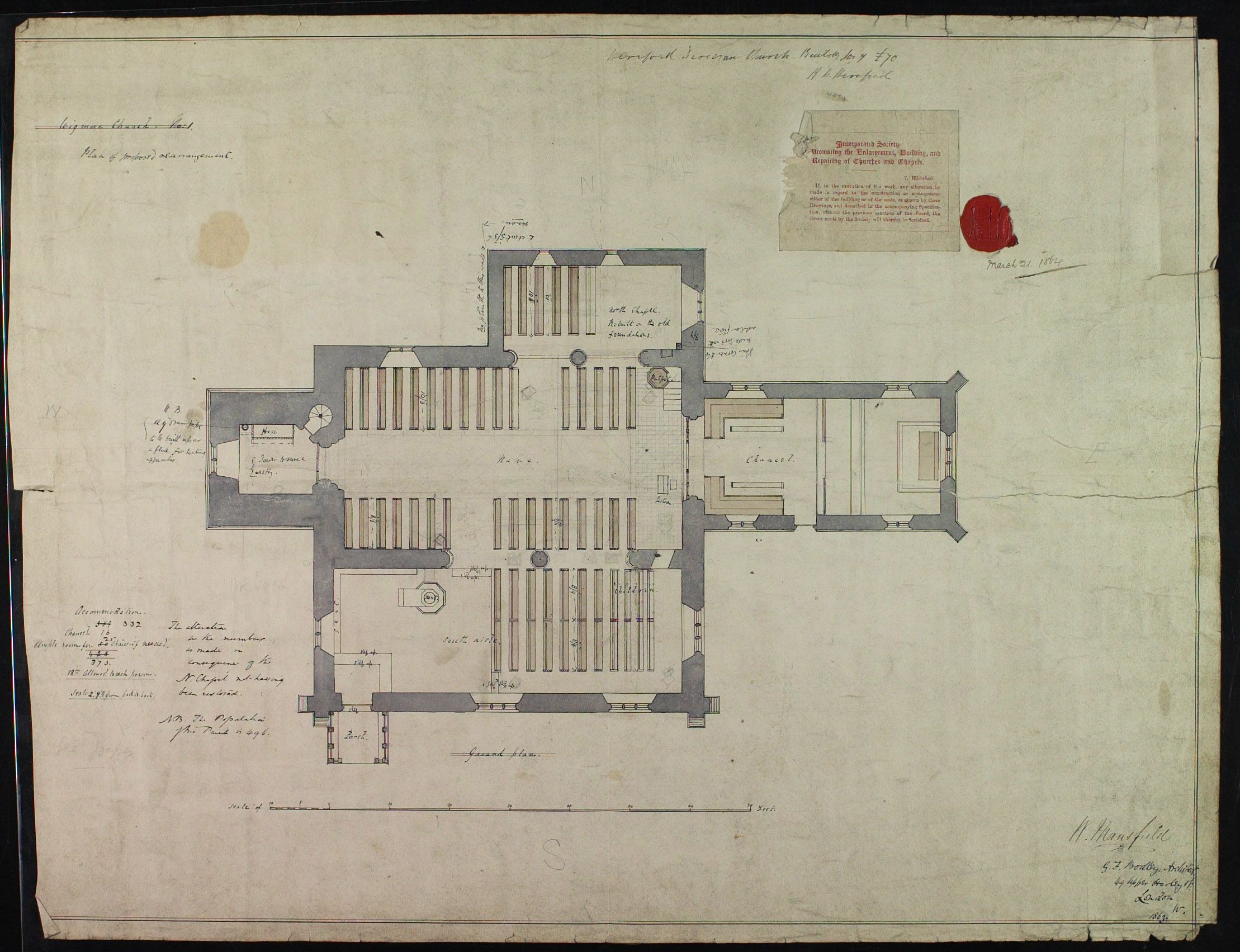
Floor plan of the 1864 restoration by architect G F Bodley
The heating system is based upon the Hypocaust method used by the Romans when they warmed their Villas and Bathhouses.
The Roman Hypocaust had a furnace which circulated the hot flue gases through floor voids and thence through ducts or
chimneys built into the walls to rise up and exit to atmosphere. The hot flue gases heated the solid floors and walls
which then radiated their heat into the space to be heated.
The heating system in St James uses a similar method but has 'fire pits' built in the aisles housing the furnaces. Underfloor ducts
from the fire pits are used to remove and transfer the hot flue gases before dispersing them up through a tall chimney located
within the Tower. Two fire pit furnaces in the floor constructed from brickwork are built close to the south wall with their flue
exit ducts traversing the floors conveying the hot flue gases to the chimney.
A report written by architect Basil Stallybrass gives his assessment on the state of the existing heating that says "stoves in the
middle of the floor connected by a flue beneath it to a chimney in the Tower with a pilot stove at the bottom of the chimney"
| The
report implies that there were more than
the two fire pits built when the Hypocaust
system was originally installed, than
remain today, assuming this occurred
at the time of the Victorian restoration
in 1864. The absence of scorching on the
face of the brickwork inside the fire pits
is an indication that high
temperatures were not being achieved
inside the fire pit when the furnaces were
in use. This deficiency could be
attributed to three main causes. 1) The small size of the fire pit prevented the furnace containing sufficient quantity of fuel to build the combustion temperatures high enough to produce the amount of flue gases necessary to pass through the underfloor ducts en-route to the chimney. 2) Where sections of the underfloor ducts had been opened to provide internal inspection, the amount of black soot deposited on the floor of the duct was indicative of incomplete combustion occurring in the fire pit furnace. Observe the amount of detritus on the floor of the duct surveyed by camera. 3) Although a pilot stove was lit at the base of the chimney to increase the stack effect and induce the flue gases to be drawn along the underfloor ducts, the small internal size and length of the horizontal ducts would have created too much flow resistance for the furnace flue gases. An Architectural report commissioned in 2011 recommends the remaining section of the brickwork chimney in the Tower be removed. This has now been done, so now there is no evidence remaining to show how the various underfloor ducts were grouped and connected at the base of the chimney. |
The fire pits have cast iron floor cover plates inlaid and set into the floor surface on top of the fire pit. The floorplate has a small
removable centre section with an opening that enables it to be lifted out. Both plates have the following written inscription
Wm Hodson - 8 Alveston Place - Leamington - Wark - Mitchell's Principle - Church Heating.
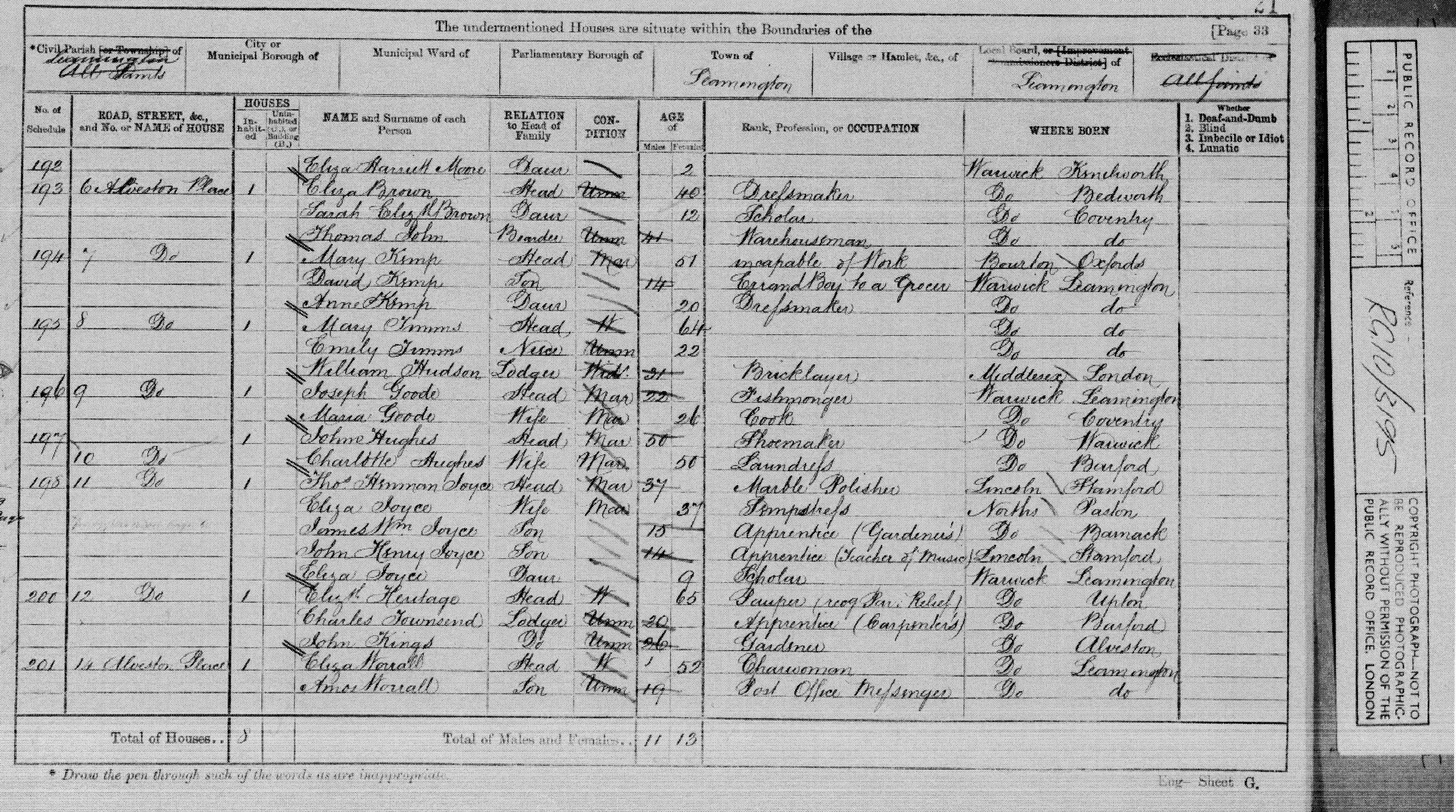
Researching the Census lists of 1871 found a William Hudson aged 31 living at 8 Alveston Place Leamington,
residing as a lodger with the occupation of Bricklayer. Birthplace given as Middlesex.
Mitchell is assumed to be the name of the person who devised this Principle that was used as a method for warming a Church.
How Wm Hodson became involved and decided to utilize this Principle has still to be established.
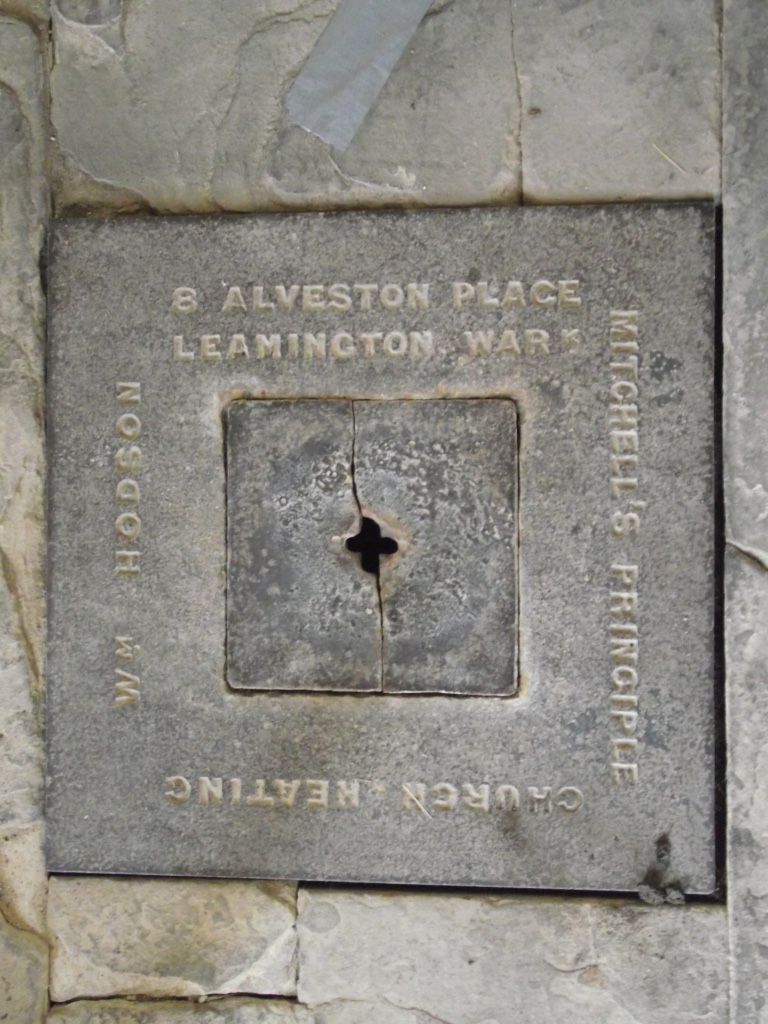 Cast iron floorplate with inscription and removable centre section |
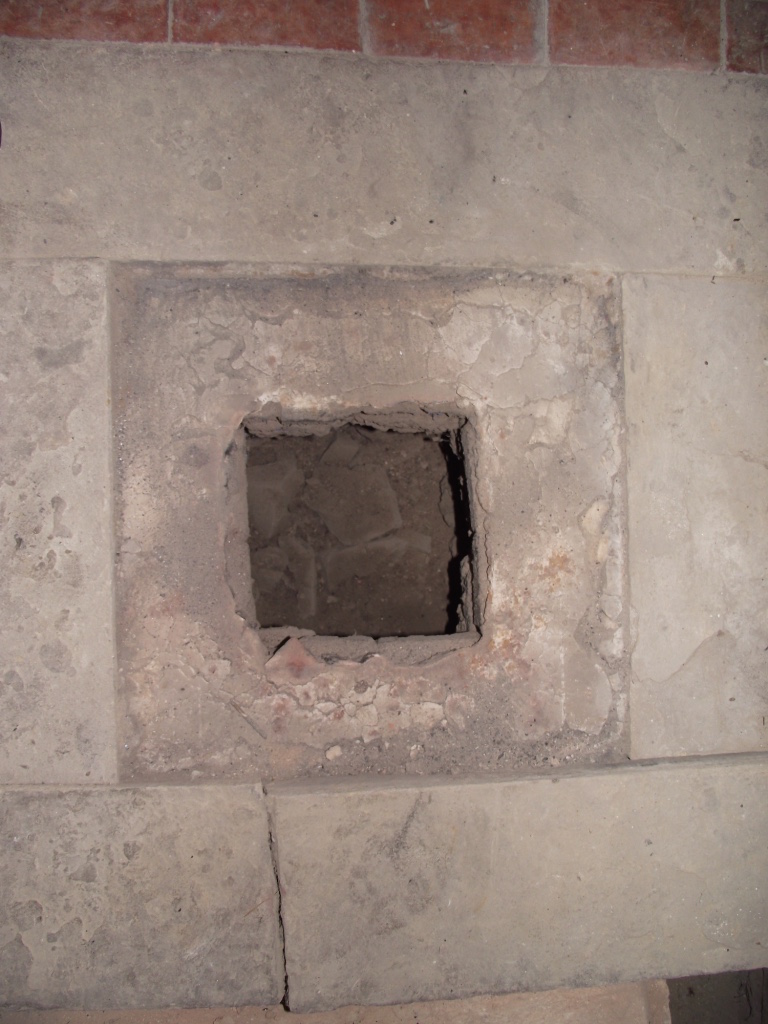 Floorplate removed looking into brickwork fire pit |
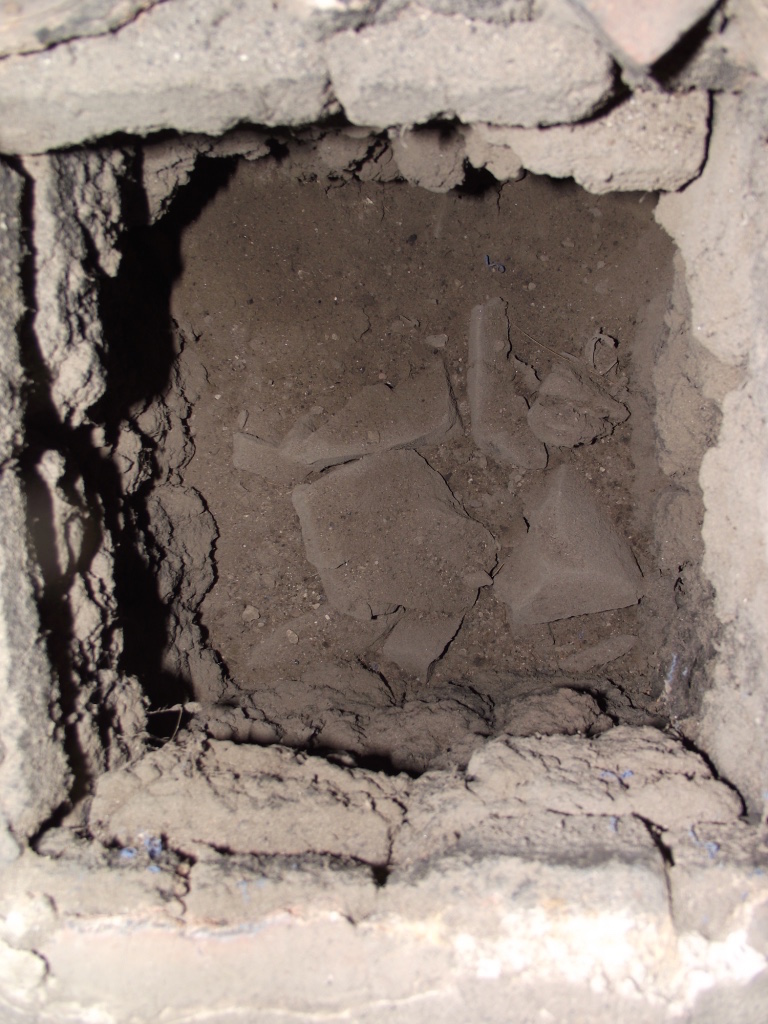 Looking down into the brickwork fire pit |
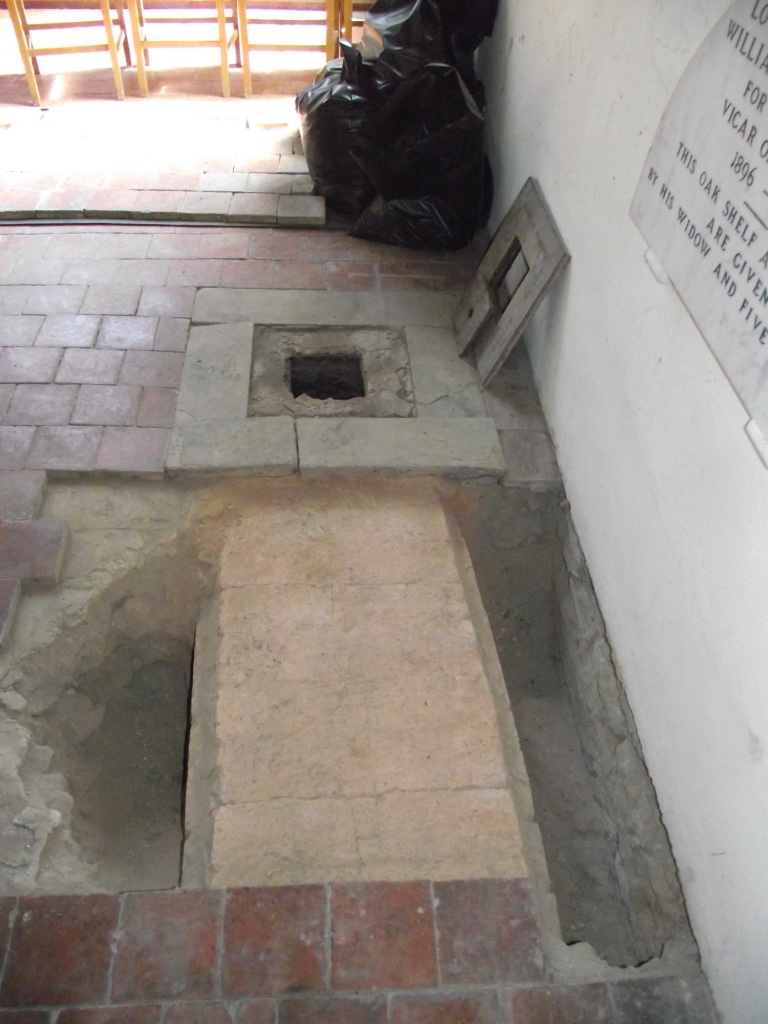 Section of the underfloor flue duct enclosed in brickwork |
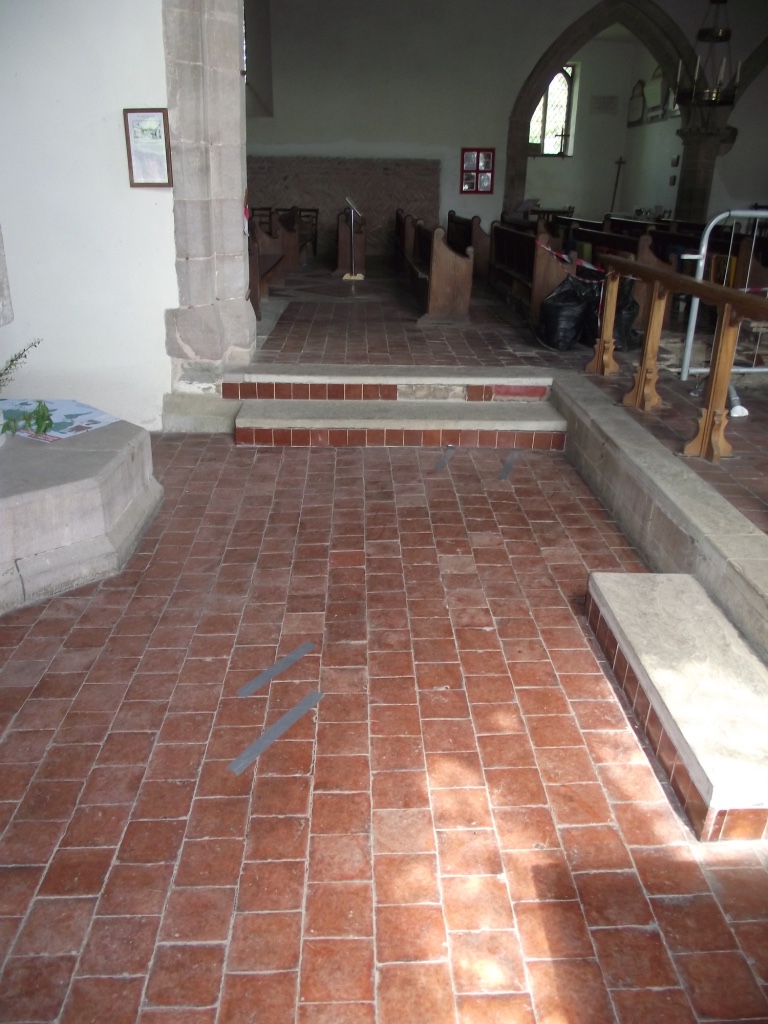 View across South Aisle showing marker tapes over floor ducts |
 Floor duct viewed from South |
 Twin floor ducts viewed from West |
 Twin floor ducts viewed from North |
THE NORTH CHAPEL
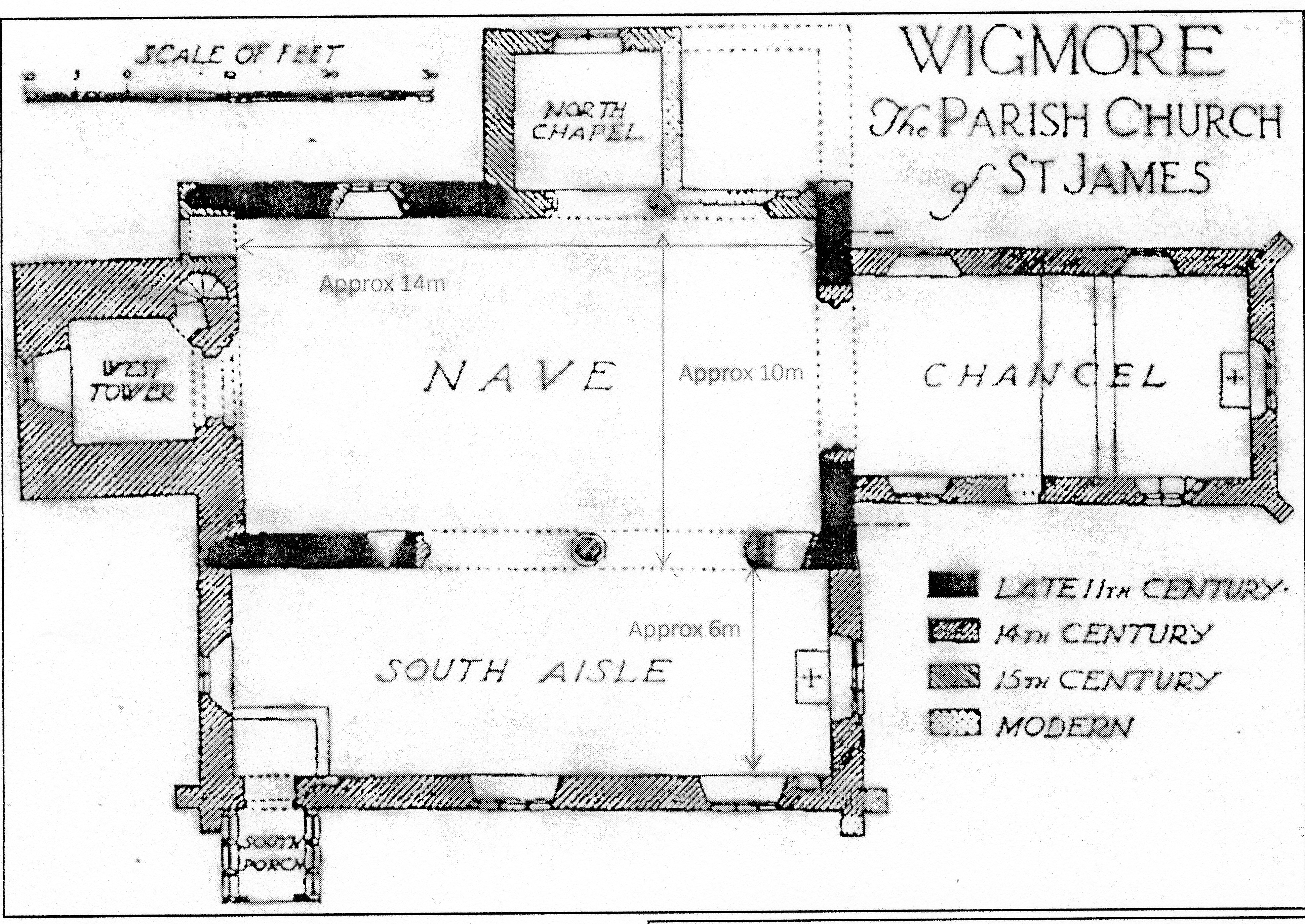
The western bay of the North Chapel was converted for use by the Kevill-Davies family of Croft Castle
and Wigmore Hall. Their private bay was said to house an elegant Buzaglo stove.
For more information about the Buzaglo stove
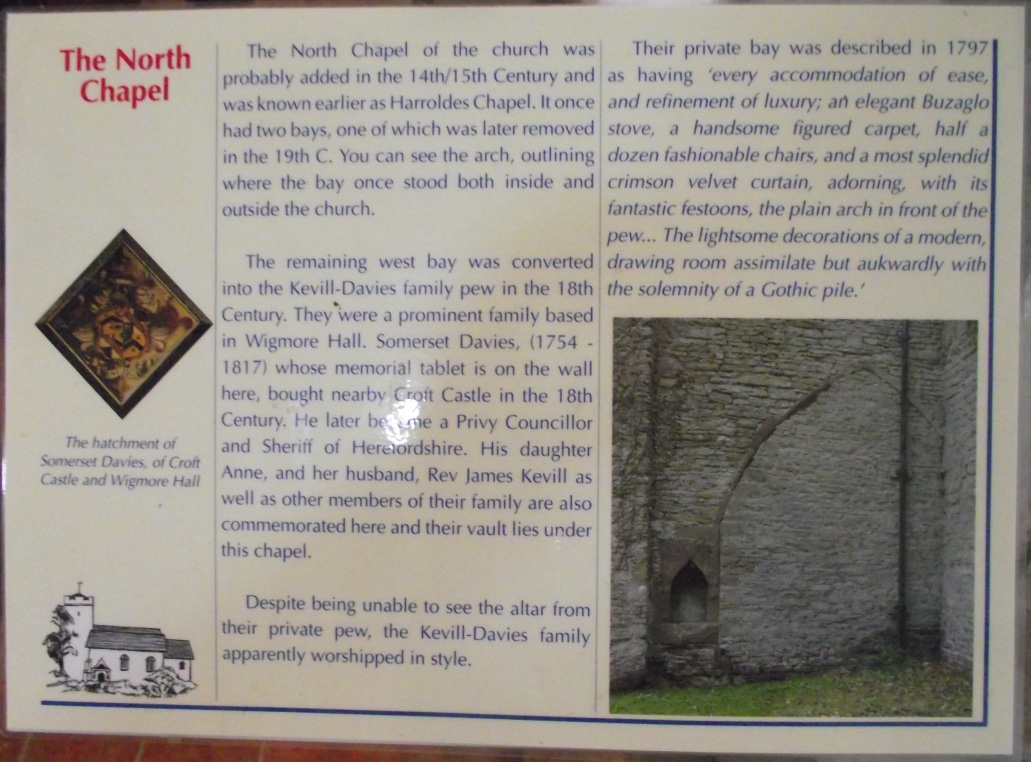
A wet heating system was installed later in the Church after WWII with an oil fired boiler
feeding radiators sited in the Nave. Only the redundant boiler remains in situ.
